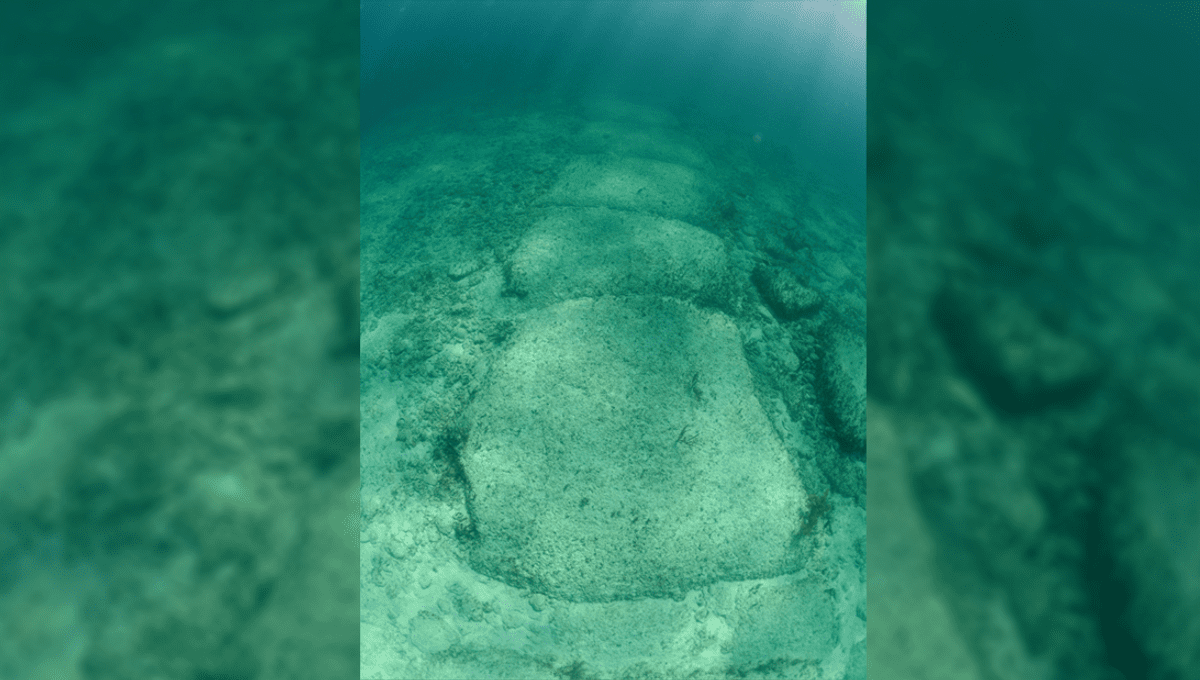
Some 6 meters (20 feet) below the water’s surface off the North Bimini coast in the Bahamas sits a surprising geological structure that looks remarkably like an ancient 457-meter-long (1,500 feet) cobbled road.
Made of large angular blocks of beachrock measuring up to 4 meters (13 feet) in length each, Bimini Road, or Bimini Wall, runs parallel to two smaller paths before neatly curving at the end to form a hook. The impressive blocks that make up Bimini Road lie in an orderly row along the seafloor and look as if they once had right-angled corners before being smoothed by natural erosion.
The road’s discovery in 1968 by subsea archaeologists Joseph Manson Valentine, Jacques Mayol, and Robert Angove unsurprisingly sparked speculation that the described “pavement” may have been part of a lost civilization, namely, Atlantis.
It is, of course, nothing to do with Atlantis – which is entirely fictional and based on some largely problematic ideologies. The truth of the road’s formation, however, is arguably much more fascinating.
The beachrock that makes up the road is prolific across the coast of North Bimini. A layer of limestone sits beneath the Bimini Road, and together both materials have been submerged through a combination of rising Holocene sea levels and erosion of underlying sand. While their uniform block-like appearance and their recession into the sea floor makes the road appear man-made, it’s actually believed the beachrock started out as a larger sheet of rock before being broken into the shards we see today.
Beachrock is a well-cemented sedimentary rock that forms relatively rapidly and is made up of a mixture of materials. The rocks making up Bimini Road consist of peloids (small mud pellets), sand, shell fragments, remains of a Cambrian protozoan called benthic foraminifera, and codiacean algae.
In 1978, the Department of Geology at the University of Miami used radiocarbon dating to assess whole rock samples, shells extracted from the rock core, and the carbonate cementing the rock core. The findings estimated the age of the Bimini Road rocks to be around 2,000 years old.
The relatively young age of the Bimini Road rocks stands as hard evidence against the relationship to Atlantis – which supposedly sank 12,000 years ago. But that didn’t stop the tenacious Atlantologists. In a largely flawed paper released in 1980, whole rock samples were analyzed and found to have a uranium-thorium date of 14,992±258 before present (7132-19/2), or 15,000 years old.
These findings, however, were found to lack scientific value as the samples were partially recrystallized, meaning calculations of uranium-thorium dates would not give an accurate indication of age. Additionally, had the uranium-thorium dating been correct, the area of the Bimini coast the samples were collected from would have been between 90 and 95 meters (295 and 312 feet) above sea level at the time.
So, the Bimini Road might not lead you to Atlantis, but it will still make for an incredible snorkeling spot.
Source Link: What Is The Mysterious Sunken “Bimini Road” And Where Does It Lead?